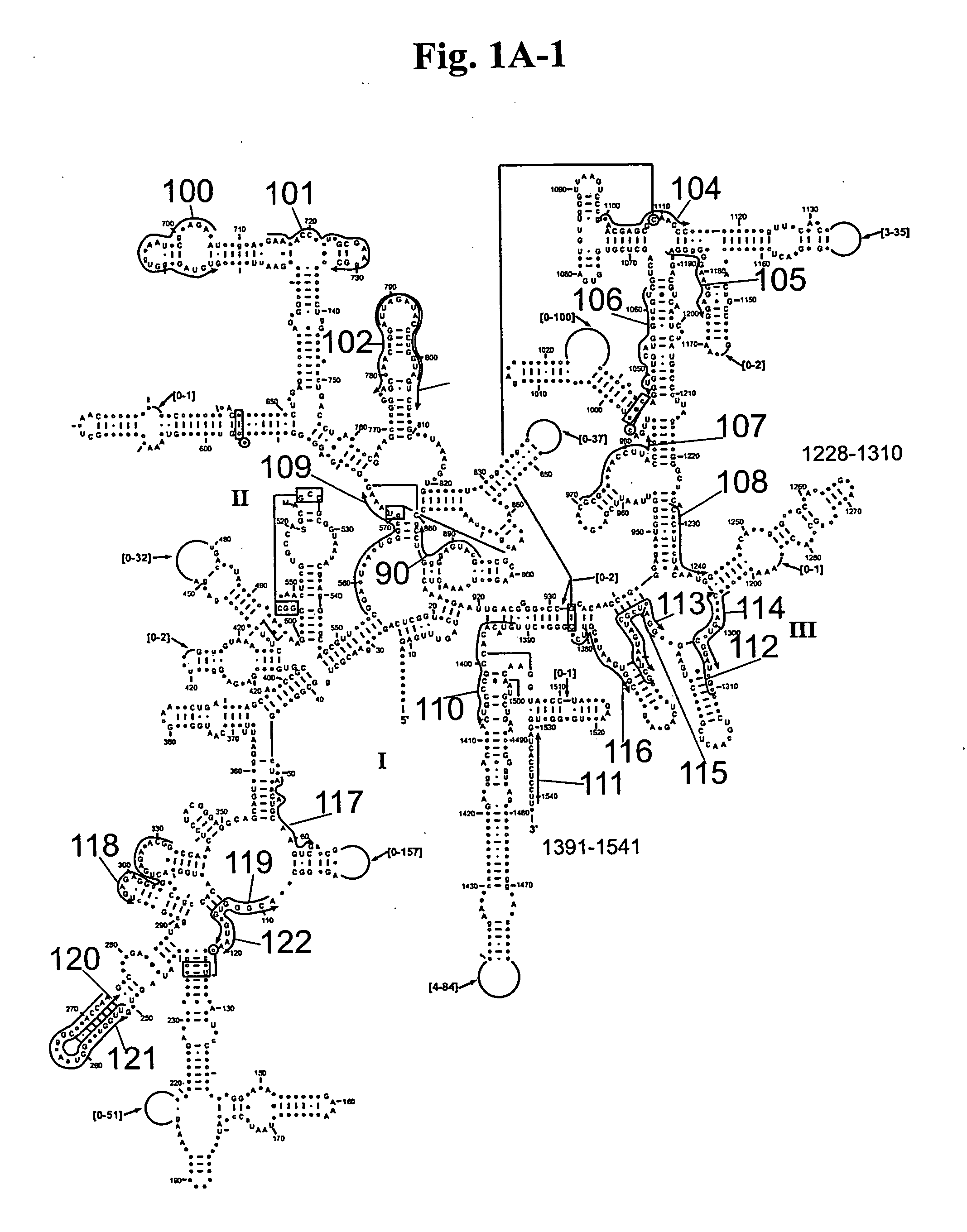Secondary structure defining database and methods for determining identity and geographic origin of an unknown bioagent thereby
a bioagent and database technology, applied in the field of investigative bioinformatics, can solve the problems of affecting the quality of life of patients, and encumbrance of traditional slow multi-step culture based assays, and achieve the effect of facilitating the analysis of regions
- Summary
- Abstract
- Description
- Claims
- Application Information
AI Technical Summary
Benefits of technology
Problems solved by technology
Method used
Image
Examples
example 1
Nucleic Acid Isolation and PCR
[0105]In one embodiment, nucleic acid is isolated from the organisms and amplified by PCR using standard methods prior to BCS determination by mass spectrometry. Nucleic acid is isolated, for example, by detergent lysis of bacterial cells, centrifugation and ethanol precipitation. Nucleic acid isolation methods are described in, for example, Current Protocols in Molecular Biology (Ausubel et al.) and Molecular Cloning; A Laboratory Manual (Sambrook et al.). The nucleic acid is then amplified using standard methodology, such as PCR, with primers which bind to conserved regions of the nucleic acid which contain an intervening variable sequence as described below.
example 2
Mass Spectrometry
[0106]FTICR Instrumentation: The FTICR instrument is based on a 7 tesla actively shielded superconducting magnet and modified Bruker Daltonics Apex II 70e ion optics and vacuum chamber. The spectrometer is interfaced to a LEAP PAL autosampler and a custom fluidics control system for high throughput screening applications. Samples are analyzed directly from 96-well or 384-well microtiter plates at a rate of about 1 sample / minute. The Bruker data-acquisition platform is supplemented with a lab-built ancillary NT datastation which controls the autosampler and contains an arbitrary waveform generator capable of generating complex rf-excite waveforms (frequency sweeps, filtered noise, stored waveform inverse Fourier transform (SWIFT), etc.) for sophisticated tandem MS experiments. For oligonucleotides in the 20-30-mer regime typical performance characteristics include mass resolving power in excess of 100,000 (FWHM), low ppm mass measurement errors, and an operable m / z r...
example 3
Identification of Bioagents
[0109]Table 2 shows a small cross section of a database of calculated molecular masses for over 9 primer sets and approximately 30 organisms. The primer sets were derived from rRNA alignment. Examples of regions from rRNA consensus alignments are shown in FIGS. 1A-1C. Lines with arrows are examples of regions to which intelligent primer pairs for PCR are designed. The primer pairs are >95% conserved in the bacterial sequence database (currently over 10,000 organisms). The intervening regions are variable in length and / or composition, thus providing the base composition “signature” (BCS) for each organism. Primer pairs were chosen so the total length of the amplified region is less than about 80-90 nucleotides. The label for each primer pair represents the starting and ending base number of the amplified region on the consensus diagram.
[0110]Included in the short bacterial database cross-section in Table 2 are many well known pathogens / biowarfare agents (sh...
PUM
| Property | Measurement | Unit |
|---|---|---|
| Level | aaaaa | aaaaa |
Abstract
Description
Claims
Application Information
 Login to View More
Login to View More - R&D
- Intellectual Property
- Life Sciences
- Materials
- Tech Scout
- Unparalleled Data Quality
- Higher Quality Content
- 60% Fewer Hallucinations
Browse by: Latest US Patents, China's latest patents, Technical Efficacy Thesaurus, Application Domain, Technology Topic, Popular Technical Reports.
© 2025 PatSnap. All rights reserved.Legal|Privacy policy|Modern Slavery Act Transparency Statement|Sitemap|About US| Contact US: help@patsnap.com



